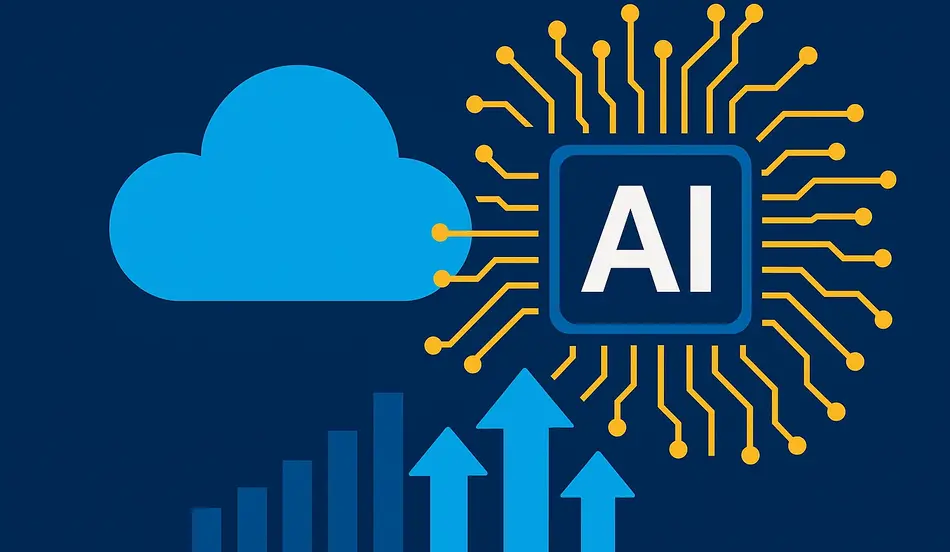Cloud Providers Escalate Computing Power Race Amid Soaring AI Demand
AWS CEO Matt Garman has revealed that Amazon’s cloud AI infrastructure investments have generated a “multi-billion dollar business” as enterprises rapidly adopt artificial intelligence technologies. In an exclusive Bloomberg Technology interview marking his first year as CEO, Garman emphasized how cloud providers are dramatically scaling their infrastructure capabilities to meet unprecedented demand for both AI training and inference workloads.
“We believe every business, industry, and job will be transformed by AI,” said Garman, highlighting that the current multi-billion dollar revenue stream is “just the start” of a massive transformation in cloud computing requirements.
Infrastructure Expansion Accelerates Globally
Cloud AI infrastructure investments are expanding geographically at a rapid pace, with AWS announcing continued capacity growth in Latin America and Europe. The company recently launched a Mexico region and will soon open a European Sovereign Cloud specifically designed for critical EU-focused workloads requiring strict data sovereignty compliance.
These regional expansions reflect growing global demand for cloud-based AI services that can accommodate both regulatory requirements and performance needs of next-generation applications.
Custom Silicon Development Intensifies Competition
The race to build specialized AI hardware has become a critical component of cloud AI infrastructure investments. AWS is deploying their custom-designed TrainingM2 processors as part of Project Rainier, a collaboration with Anthropic to build “one of the largest clusters ever released” for training the next generation of Claude AI models.

Cost Efficiency Drives Innovation
While acknowledging NVIDIA’s dominance in AI chips, Garman emphasized that cost reduction remains essential for widespread AI adoption: “Today, much of the feedback you get is AI is still too expensive. Costs are coming down aggressively, but innovation on the silicon level needs to bring costs down further.”
These cloud AI infrastructure investments aim to significantly improve performance-to-cost ratios, making AI capabilities accessible to more organizations across different industries.
Shifting Workload Patterns Inform Investment Strategy
A critical insight into future cloud AI infrastructure investments is the expected shift from training to inference workloads. According to Garman, while early AI adoption primarily focused on model training, the industry is evolving:
“I expect over time 90% of usage will be in inference. Inference is how AI is embedded in the applications everyone uses… every application will have inference as a core building block.”
This transition has profound implications for how cloud providers allocate their infrastructure investments, with AWS positioning inference capabilities as “the new building block” alongside traditional compute, storage, and database services.
Hyperscalers Forge Strategic AI Partnerships
Major cloud providers are forming strategic partnerships with AI leaders to strengthen their positioning. AWS’s collaboration with Anthropic has been particularly significant, with Garman noting: “Anthropic has the best models. Claude 4 launched last week with incredible adoption from our base.”
These partnerships include substantial cloud AI infrastructure investments like Project Rainier, which will create a compute cluster “more than five times the size” of what was used to train previous models, demonstrating the exponential growth in resource requirements.
Multi-Cloud AI Model Availability
When asked about Anthropic making their models available on competing platforms like Microsoft Azure, Garman expressed a pragmatic stance: “That’s OK. Many of our customers make their applications available in different places.” This indicates a maturing market where cloud AI infrastructure investments must coexist with flexible deployment options.
Key Considerations for Enterprise AI Strategy
Organizations planning their own cloud AI infrastructure investments should consider:
• Balancing training versus inference requirements based on specific use cases
• Evaluating custom silicon options (like AWS TrainingM2) against traditional GPU deployments
• Considering regional data sovereignty requirements that may influence cloud provider selection
• Preparing for the integration of AI capabilities into existing applications rather than treating AI as separate
• Understanding how token economics and resource utilization impact overall costs
• Exploring cloud engineering talent acquisition to support implementation
According to Gartner’s latest forecast, cloud infrastructure spending is expected to grow 26.1% this year, with AI workloads driving significant portions of this increase.
The technology sector employment landscape is also shifting dramatically as organizations seek talent capable of implementing and managing advanced cloud AI systems.




